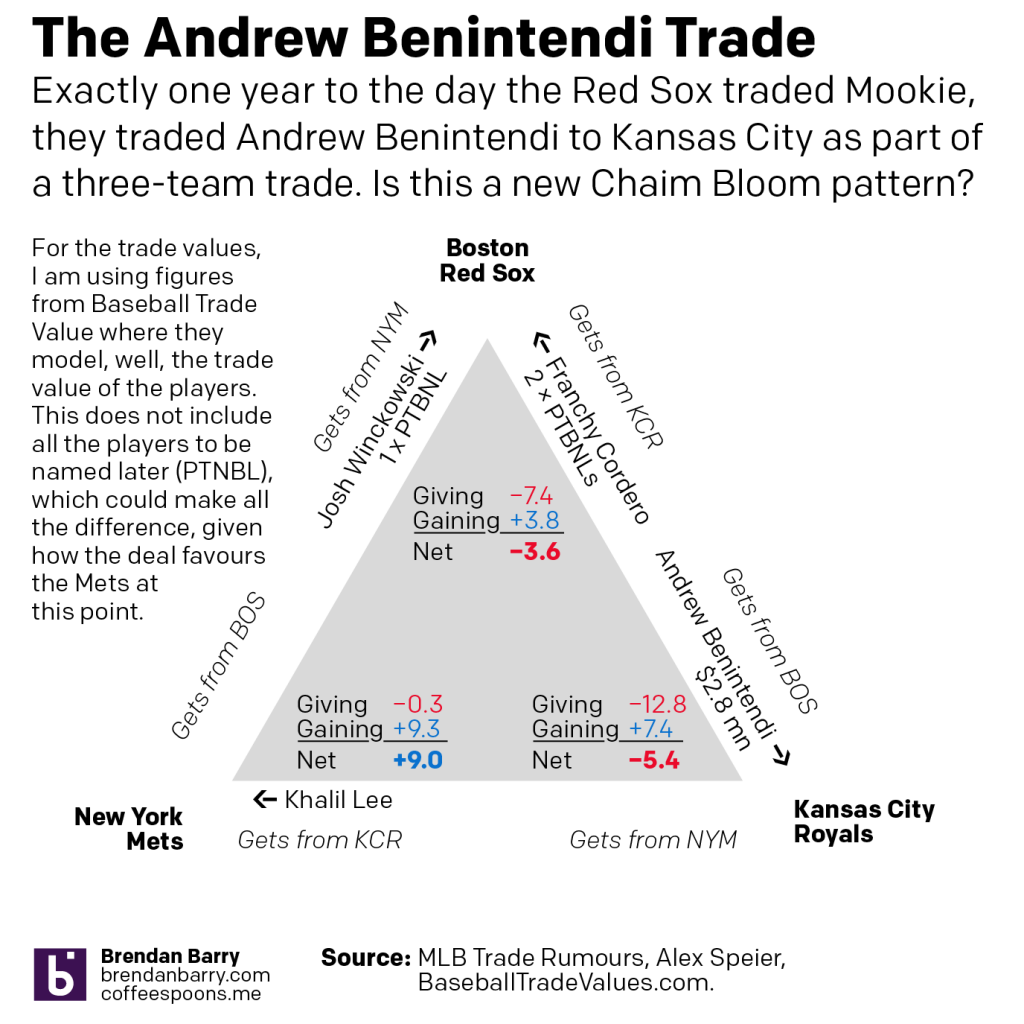Yesterday, one year to the day the Boston Red Sox traded Mookie Betts to the Los Angeles Dodgers, the Red Sox made another big trade, sending Andrew Benintendi, their starting left fielder, to the Kansas City Royals as part of another three-team trade—last year’s three-team part fell apart, but initially involved Boston receiving a quality reliever from the Minnesota Twins.
In this year’s trade, the Red Sox receive an outfielder, Franchy Cordero, from the Royals and a pitcher, Josh Winckowski, from the New York Mets. Boston is sending $2.8 million to Kansas City to help defray the costs. Using data from Baseball Trade Value, we can make a quick graphic to show how this trade shakes out for the teams involved.

At first glance, we see that the Red Sox and the Royals are giving up more than they are receiving in value. The Mets look like the clear winner here, by a long shot.
And it could end up that way this time next year.
But, there is one enormous question mark—or maybe three. The Red Sox are also acquiring one player to be named later from the Mets and two from the Royals. Players to be named later are usually not the high end of prospects, but instead of low to middle value. And what appears likely in this case is that the Red Sox will be presented lists of players from both teams and Boston can choose which ones they like. The key here is that this could take a few months to sort out, because Boston wants to see how these players perform in the minor leagues. In 2020, there was no minor league season and so teams have very little to no information on players, which makes it nigh impossible to accurately assess their skill sets.
And so yes, we can make graphics like this and talk about how the Red Sox lost this trade. But in reality, we’ll need to wait a few months to see the last three players of the deal to see how badly—or how well—Boston does in the end.
Credit for the piece is mine.
